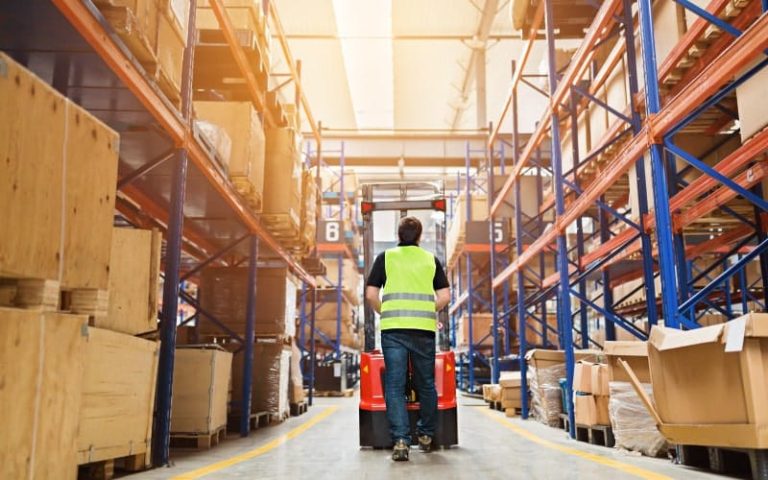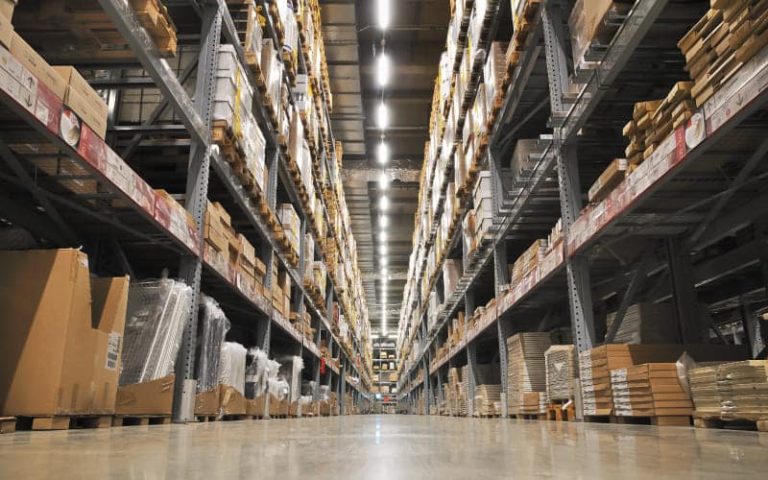Cantilever Rack Safety and Maintenance: Inspection Guidelines for Warehouse Managers
It started with a creak, one of those subtle sounds that echo through a busy warehouse. The operations team at a regional distribution center didn’t think much of it. After all, their cantilever racking system had been in place for years without incident.
But then a forklift clipped one of the outer uprights during a rush delivery.
The arm sagged slightly and went unnoticed. The next day, under the weight of a full load, however, that arm gave out. Several pipes crashed to the floor. Fortunately, no one was injured, but it shut down operations, damaged inventory, and an entire row of racking had to be decommissioned.
All of it could have been prevented with a simple inspection and routine maintenance.
In this blog post, we’ll provide you with a checklist for inspection and maintenance to improve safety and reduce risk.
Why Routine Inspection Matters
Cantilever racks operate under constant pressure: static loads, dynamic forklift movement, and the occasional impact event all contribute to wear over time. Even minor damage can compromise system integrity if left unchecked. Unlike traditional pallet racking, cantilever systems rely heavily on cantilevered arms and open access design, which means:
- Loads are more exposed to handling errors
- Arms bear high moment forces without vertical front support
- Damage to one arm or upright can directly impact the whole bay
Cantilever Racks Inspection Checklist
A thorough cantilever rack inspection should follow a consistent, documented process. Walk every aisle that includes cantilever racks and inspect from top to bottom, front and back.
Structural Integrity
- Bent or deformed arms: Check for deflection under load or arms tilting upward/downward at rest.
- Cracked welds: Look at arm-to-upright joints and bracing connectors
- Upright damage: Inspect for dents, buckling, or impact damage to towers and bases
- Loose or missing hardware: Confirm that bolts, locking pins, and fasteners are secure and original
Connections and Bracing
- Bracing alignment: Horizontal and diagonal bracing should be present and properly secured
- Missing braces: Remove and isolate any bay missing bracing, until repaired
- Weld failure or stress fatigue: Look for hairline cracks or rust trails, especially at brace-to-upright connections
Load Conditions
- Overloading: Verify stored materials fall within rated capacity
- Improper distribution: Check if loads are unevenly spaced or concentrated on a single arm
- Sagging under load: Arms should remain level under full load. Permanent sag indicates fatigue
Anchoring and Base Stability
- Base plates: Inspect for corrosion, warping, or damage at the base plate welds
- Anchors: Floor anchors should be tight, undamaged, and flush with the base plate holes
- Floor integrity: Look for cracking or settlement in concrete slabs near uprights or base loads
Environmental Conditions
- Rust or corrosion: Check for corrosion on outdoor racks or racks near washdown areas, coolers, or chemicals
- Surface degradation: Flaking paint, bubbling, or pitting may indicate underlying damage
- Thermal stress: Heat or freeze conditions may cause expansion/contraction in materials or fasteners
Accessories and Add-Ons
- Arm stops or lips: Confirm they’re intact and properly secured
- Decking: Inspect for cracking, bending, or separation if using solid or mesh decking
- Labeling: Capacity signage must be visible and legible on every bay or tower
Cantilever Racking Maintenance Checklist
Inspections are only half the equation. Proactive cantilever racking maintenance ensures your system integrity and extends your material handling equipment lifespan.
Set a Regular Schedule
- For most operations, inspect every 6 months
- For high-load or high-traffic zones, quarterly or monthly inspection may be needed
- Follow up immediately after any impact event or structural shift
Use a Standardized Form
- Maintain records of inspections, noting any damage
- Document any actions or repairs when completed
Post-Impact Protocol
If a forklift hits an upright, arm, or brace:
- Immediately quarantine the affected area
- Conduct a thorough inspection
- Bring in a structural or third-party expert for high-severity cases
Repair vs. Replace
- Minor issues like missing bolts or loose arm pins can be fixed in-house
- Bent uprights, compromised welds, or severe corrosion typically require replacement
- Avoid temporary fixes like welding without OEM guidance, as they may not meet compliance or may void any warranties.
Professional Support and Compliance
Cantilever racking often falls outside the scope of general warehouse safety checklists, but its role in storing high-value or heavy materials makes expert oversight critical.
Engineered Documentation
- Retain original load specs and stamped engineering drawings
- Use these to confirm capacity during reconfiguration or expansion
Third-Party Inspections
- Annual inspections by certified rack professionals help identify issues missed by in-house teams
- Especially important after layout changes or significant growth in inventory volume
Compliance and Auditing
- Maintain a paper trail of inspections, maintenance, and repairs for OSHA and insurance audits
- RMI guidelines should be followed for rack design, installation, and usage
Even the strongest cantilever racks can fail under the wrong conditions. However, routine cantilever rack inspections and cantilever racking maintenance can safely serve your operation for decades. Staying proactive helps prevent accidents, preserve your inventory, and protect your team.
Conesco Storage Systems is a nationwide leader in material handling equipment. If you need new or used cantilever racks, warehouse automation, or other warehouse storage, contact our team to schedule a system review and get what you need to meet your safety and compliance standards.

Ted Hodges - CEO & Founder
Ted Hodges is the Founder and CEO of Conesco Storage Systems, a company he started in 1986 to provide turnkey warehousing products and services, including the repurposing of quality, used material handling equipment. With over 40 employees across the country, Ted and his team serve customers of all sizes throughout the different stages of the warehousing lifecycle.


